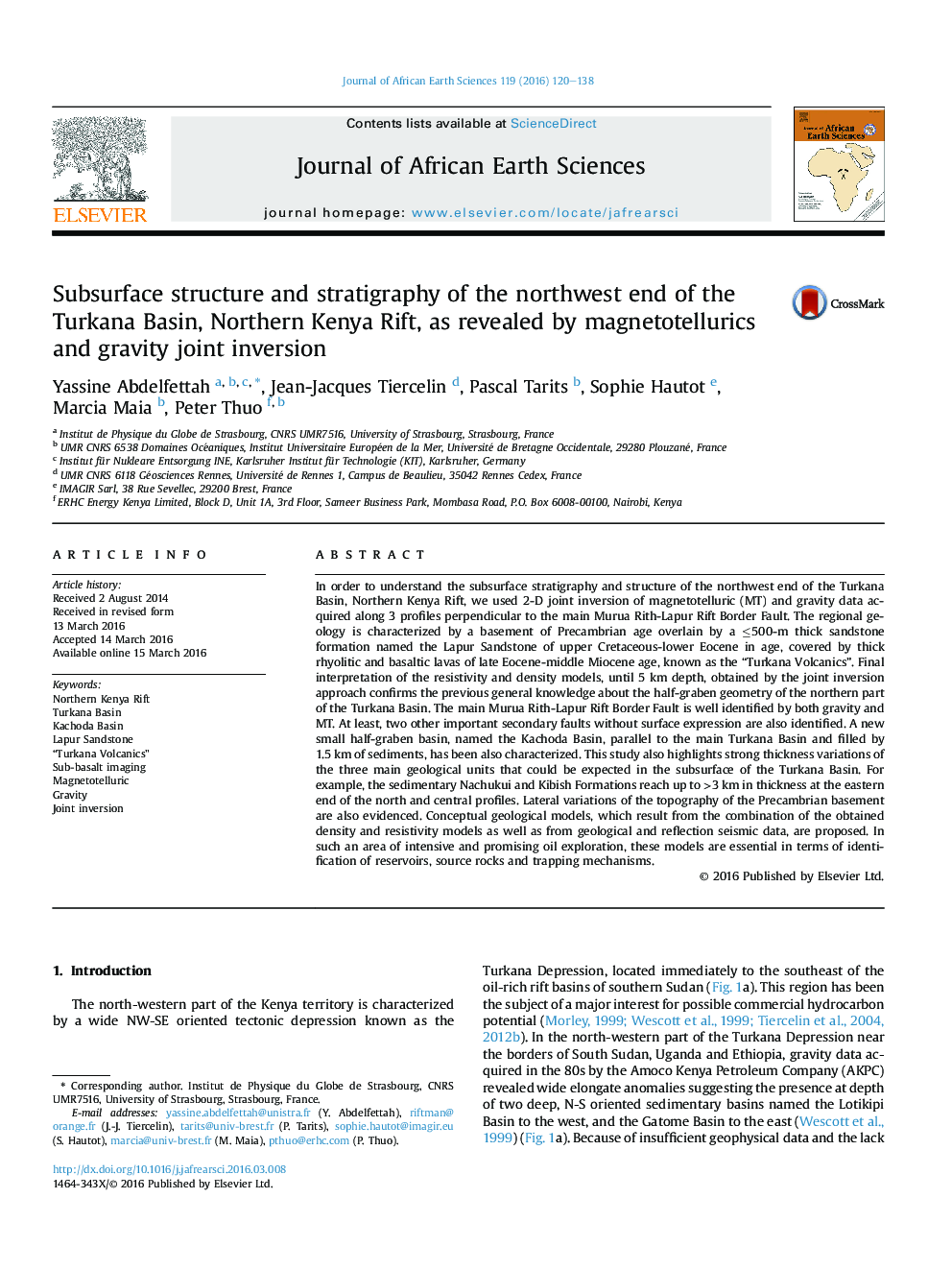| کد مقاله | کد نشریه | سال انتشار | مقاله انگلیسی | نسخه تمام متن |
|---|---|---|---|---|
| 4728349 | 1640189 | 2016 | 19 صفحه PDF | دانلود رایگان |

• Confirm the Turkana half-graben basins geometry and organization at depth.
• Delineate the “Turkana Volcanics” unit as well as horizontal/vertical variations.
• Characterize the depth and topography of the basement in the Northwest Turkana and Kachoda basins.
• Characterization of the new Kachoda half-graben basin from geometries to stratigraphy.
• MT and gravity data used in Turkana to surpass the poor quality of seismic.
In order to understand the subsurface stratigraphy and structure of the northwest end of the Turkana Basin, Northern Kenya Rift, we used 2-D joint inversion of magnetotelluric (MT) and gravity data acquired along 3 profiles perpendicular to the main Murua Rith-Lapur Rift Border Fault. The regional geology is characterized by a basement of Precambrian age overlain by a ≤500-m thick sandstone formation named the Lapur Sandstone of upper Cretaceous-lower Eocene in age, covered by thick rhyolitic and basaltic lavas of late Eocene-middle Miocene age, known as the “Turkana Volcanics”. Final interpretation of the resistivity and density models, until 5 km depth, obtained by the joint inversion approach confirms the previous general knowledge about the half-graben geometry of the northern part of the Turkana Basin. The main Murua Rith-Lapur Rift Border Fault is well identified by both gravity and MT. At least, two other important secondary faults without surface expression are also identified. A new small half-graben basin, named the Kachoda Basin, parallel to the main Turkana Basin and filled by 1.5 km of sediments, has been also characterized. This study also highlights strong thickness variations of the three main geological units that could be expected in the subsurface of the Turkana Basin. For example, the sedimentary Nachukui and Kibish Formations reach up to >3 km in thickness at the eastern end of the north and central profiles. Lateral variations of the topography of the Precambrian basement are also evidenced. Conceptual geological models, which result from the combination of the obtained density and resistivity models as well as from geological and reflection seismic data, are proposed. In such an area of intensive and promising oil exploration, these models are essential in terms of identification of reservoirs, source rocks and trapping mechanisms.
Journal: Journal of African Earth Sciences - Volume 119, July 2016, Pages 120–138